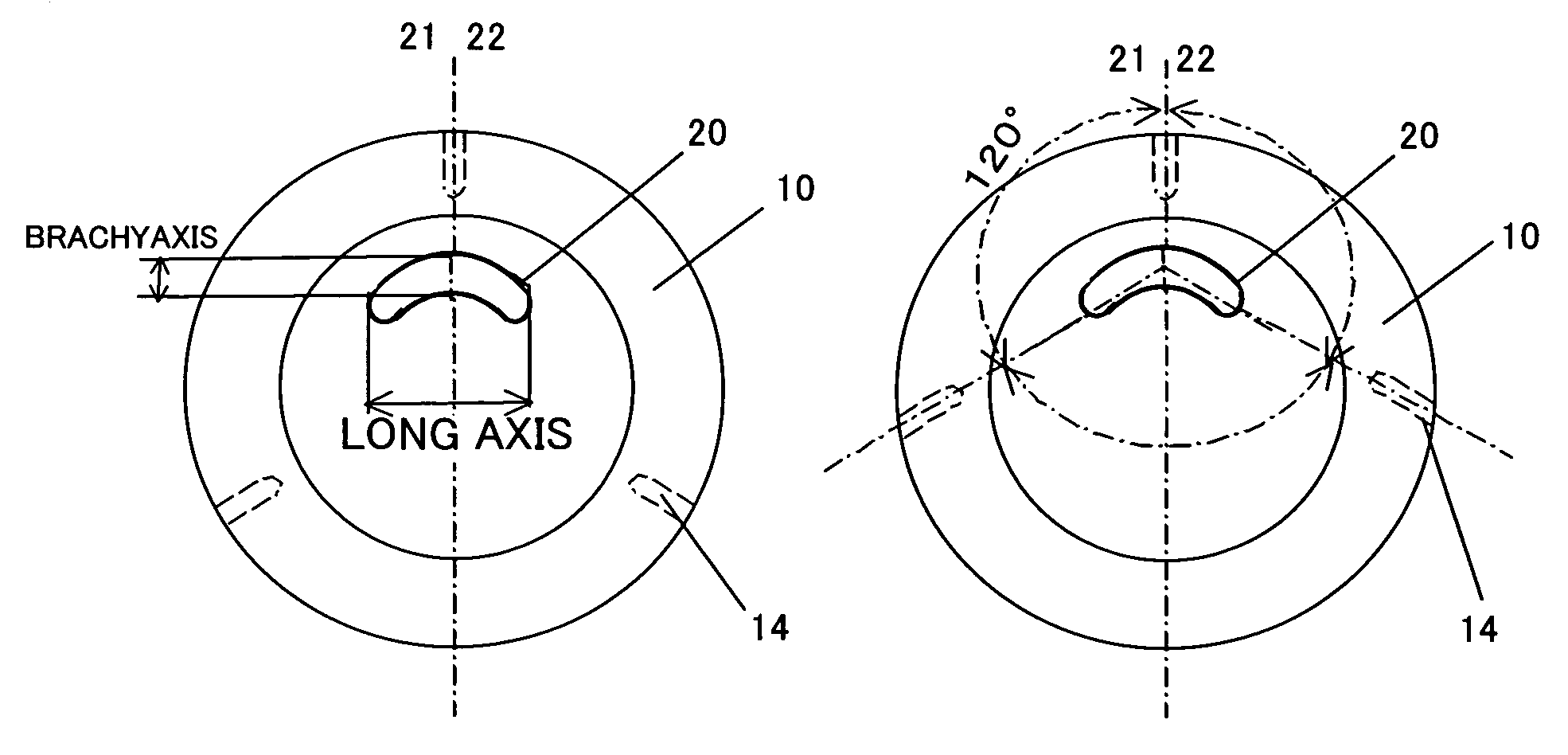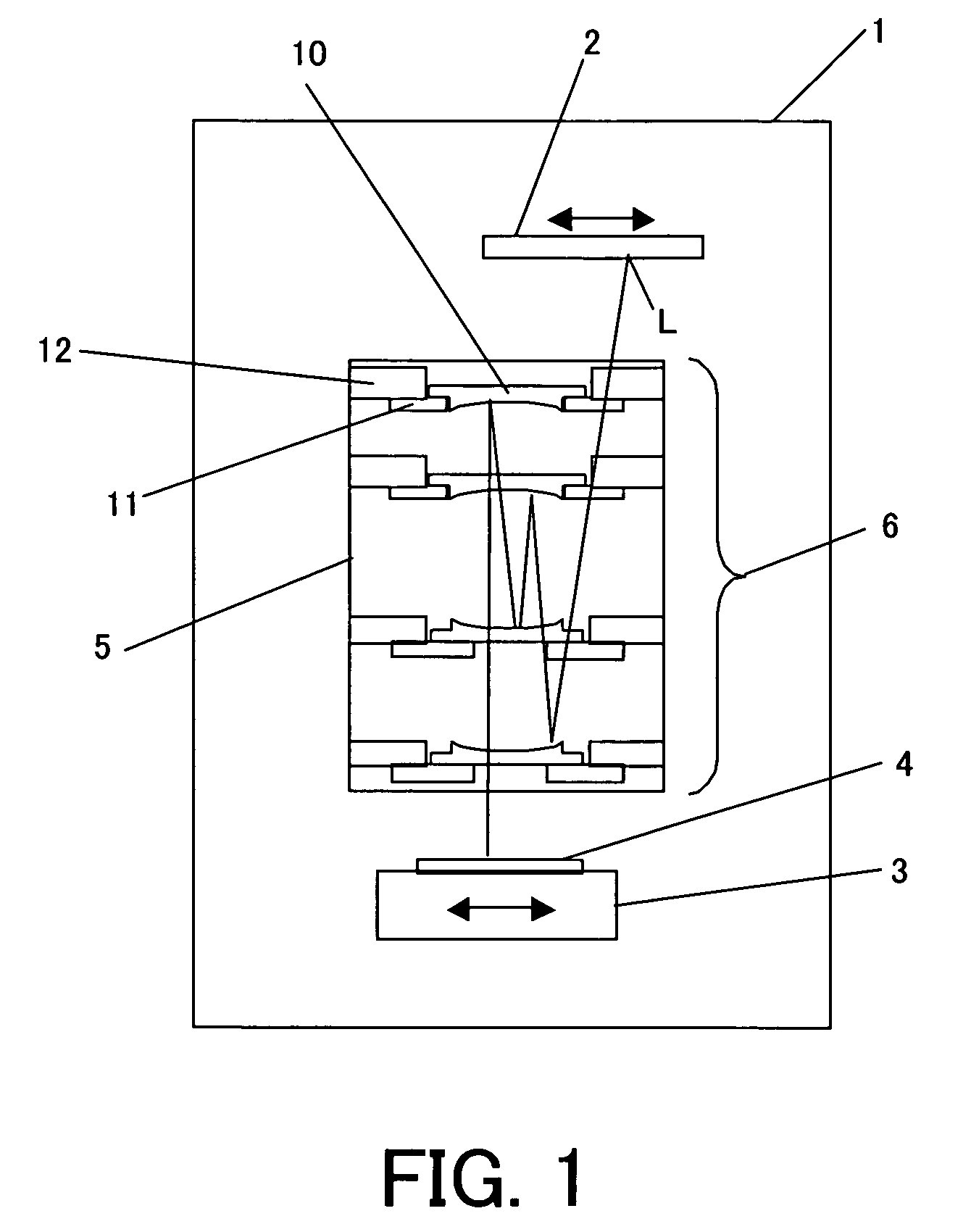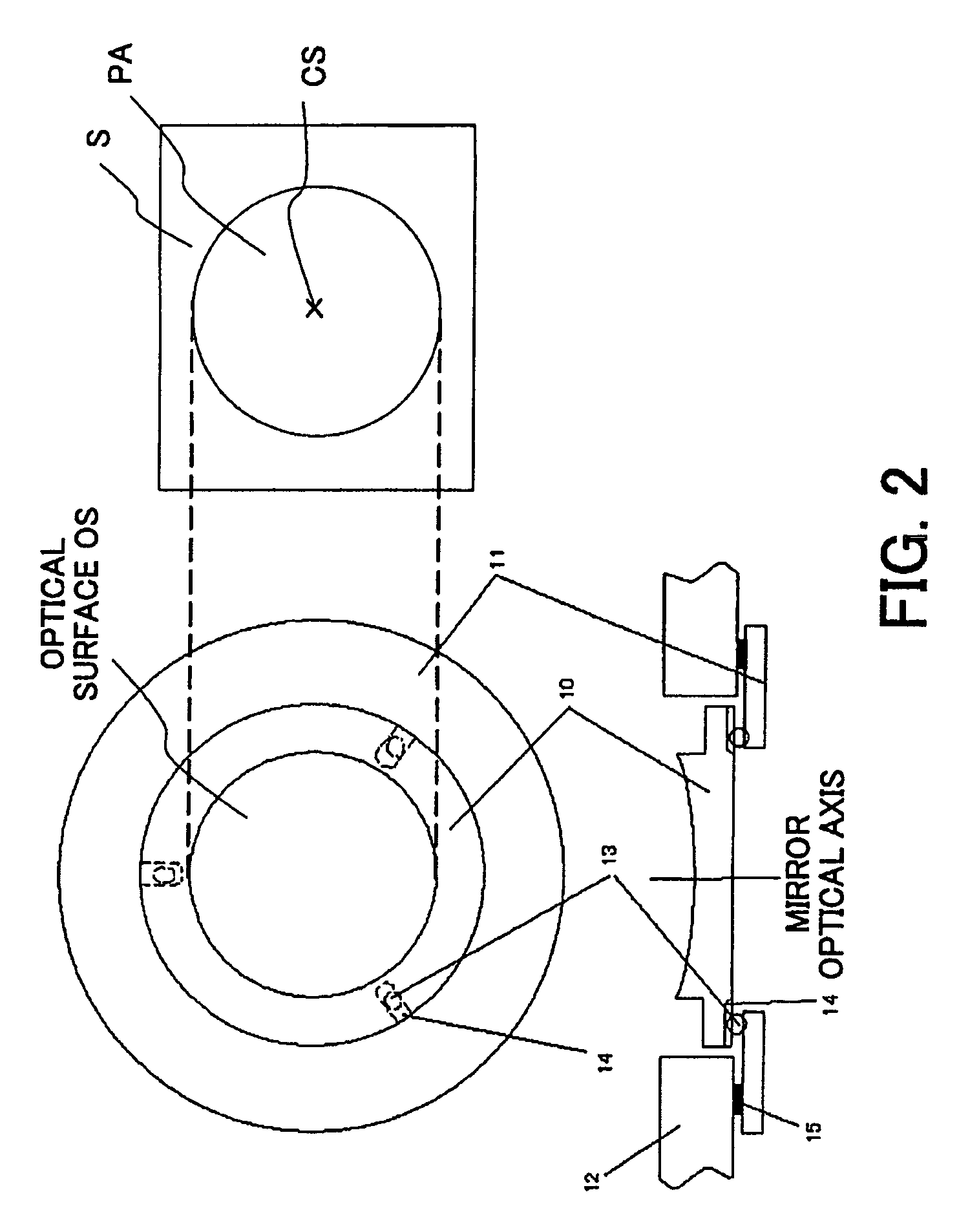Mirror holding method and optical apparatus
- Summary
- Abstract
- Description
- Claims
- Application Information
AI Technical Summary
Benefits of technology
Problems solved by technology
Method used
Image
Examples
first embodiment
[0025]FIG. 1 is a schematic structure view of an exposure apparatus with a mirror holding method of a first embodiment according to the present invention. The exposure apparatus, by using EUV light with a wavelength of about 13 nm to illuminate a mask, uniformly illuminates a reflecting type mask and projects a pattern of the mask onto a wafer.
[0026]In FIG. 1, 1 is a chamber that divides an exposure atmosphere in air, and is vacuum-pumped by a pump (not shown). An exposure light L, reflected by a reticle 2, passes a projecting optical system 6 and is illuminated onto a wafer 4. A pattern on the reticle 2 is transferred onto a wafer 4 that is arranged on a wafer stage 3.
[0027]FIG. 2 is a view of a mirror and a mirror holder according to the present invention. A mirror holding member 12, which holds a mirror-supporting member 11, is fixed on a wall of a bodytube 5. A position controller 15, arranged between the mirror-supporting member 11 and the mirror holding member 12, controls the...
second embodiment
[0032]FIG. 4 shows the second embodiment according to the present invention. An illuminating area of exposure light in FIG. 4 is an ellipse. As shown in FIG. 4A, a holder is arranged so that the symmetry axis 22, in the illuminating-area 20, of the exposure light, corresponds with the symmetry axis 21 in the mirror holder. Thus, the mirror 10 may distort symmetrically, and surface deformation, which deteriorates optical performance, is lowered. In the instant embodiment, the symmetry axis 22, of the exposure light's illuminating area 20, corresponds absolutely with the symmetry axis 21 of a mirror's 10 holding point. Furthermore, the present invention may achieve the above effect even when an error angle between the symmetry axis 22, of the exposure light's illuminating area 20 and the symmetry axis 21 of a mirror's 10 holding point is within 10° or less.
[0033]FIG. 4B shows the correspondence of the symmetry axis 22 in the exposure light's illuminating area with the symmetry axis 21...
third embodiment
[0034]FIG. 5 shows a third embodiment according to the present invention. An exposure light's illuminating area, as shown in FIG. 5, is intermediate shape between a radii and an ellipse. A holding point is arranged so that the symmetry axis 22 of the exposure light's illuminating area 20 corresponds with the symmetry axis 21 in the mirror holder. Thus, the mirror 10 may distort symmetrically, and surface deformation, which deteriorates optical performance, is lowered. In the instant embodiment, the symmetry axis 22 in the exposure light's illuminating area 20 corresponds absolutely with the symmetry axis 21 of a mirror's 10 holding point. Furthermore, the present invention may achieve the above effect even when an error angle between the symmetry axis 22 in the exposure light's illuminating area 20 and the symmetry axis 21 of a mirror's 10 holding point is within 10° or less.
[0035]FIG. 5B shows the correspondence of the symmetry axis 22 in the exposure light's illuminating area with...
PUM
 Login to View More
Login to View More Abstract
Description
Claims
Application Information
 Login to View More
Login to View More - R&D
- Intellectual Property
- Life Sciences
- Materials
- Tech Scout
- Unparalleled Data Quality
- Higher Quality Content
- 60% Fewer Hallucinations
Browse by: Latest US Patents, China's latest patents, Technical Efficacy Thesaurus, Application Domain, Technology Topic, Popular Technical Reports.
© 2025 PatSnap. All rights reserved.Legal|Privacy policy|Modern Slavery Act Transparency Statement|Sitemap|About US| Contact US: help@patsnap.com



